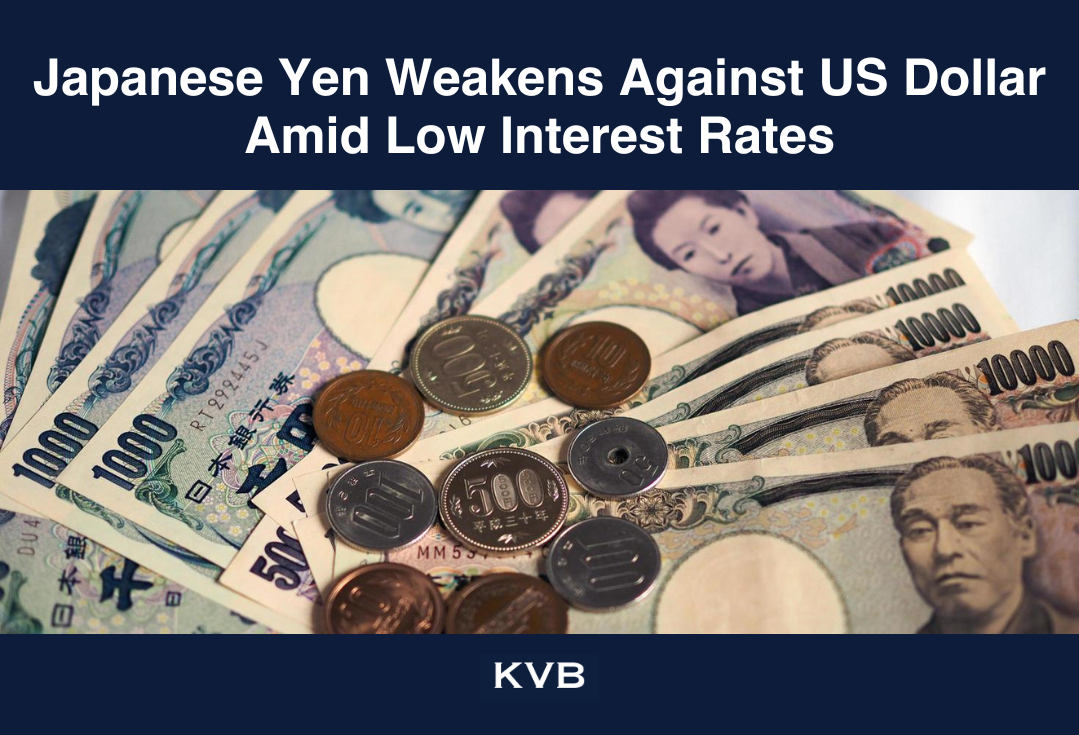


The Japanese Yen (JPY) has experienced a prolonged period of weakness against the US Dollar (USD), with the USD/JPY pair surging to a 10-month high of 145.50. This shift is largely attributed to Japan's ongoing monetary policy stance and broader market trends that continue to favor the US Dollar. In this article, we take a closer look at the factors contributing to the Yen's weakness and the potential impact on both domestic and global markets.
Japan's Monetary Policy: A Key Factor in Yen's Weakness
The Bank of Japan (BOJ) has consistently maintained an ultra-low interest rate policy in a bid to stimulate economic growth and tackle deflation. For years, Japan’s central bank has adopted a policy of negative interest rates, designed to encourage borrowing and spending in the economy. However, the continued implementation of this policy has failed to generate significant inflationary pressure, leaving the Yen vulnerable to external factors.
The BOJ's cautious approach to tightening its monetary policy contrasts sharply with the more aggressive stance taken by other major central banks, particularly the Federal Reserve. The US has been steadily increasing interest rates in response to rising inflation, which has driven demand for the US Dollar and strengthened the greenback relative to other currencies, including the Yen.
Economic Data Shows Continued Subdued Growth in Japan
Japan's economic data continues to paint a picture of sluggish growth. Despite efforts to stimulate the economy, consumer spending and business investment remain subdued, and Japan’s export sector has been under pressure due to weaker global demand. This economic stagnation further weakens the Yen, as investors have little confidence in Japan's economic prospects in the near term.
While Japan has historically been an export-driven economy, global economic uncertainty has made it increasingly difficult for the country to achieve sustainable growth. Additionally, Japan's aging population presents ongoing challenges to the workforce and social welfare systems, further complicating economic prospects.
Global Risk Sentiment: A Favorable Environment for the US Dollar
Another significant factor behind the Yen's weakness is the prevailing global risk sentiment. In times of uncertainty, investors tend to flock to safe-haven assets such as the US Dollar, which is considered the global reserve currency. The ongoing trade tensions, geopolitical risks, and the uncertainty surrounding global economic growth have contributed to a strong demand for the USD.
While the US Dollar has strengthened across most major currencies, it has had an especially pronounced effect on the Yen. The USD/JPY pair, which tracks the value of the Yen against the Dollar, has seen significant volatility, with the pair climbing steadily over the past several months. As risk appetite remains high for the US Dollar, the Yen is expected to continue facing downward pressure in the near term.
Impact of Yen Weakness on Japan's Economy
The prolonged weakness of the Yen could have mixed effects on Japan's economy. On one hand, a weaker Yen boosts the competitiveness of Japanese exports, making them cheaper for foreign buyers. This could provide a lift to Japan’s export-driven industries, particularly in sectors like automotive and electronics.
However, a weaker Yen also brings challenges, particularly in terms of rising import costs. As Japan is heavily reliant on imports for energy and raw materials, the rising cost of these imports could strain corporate profits and household budgets. Additionally, the weaker Yen could push inflation higher, which would create further challenges for Japan’s central bank as it tries to balance economic growth with price stability.
For Japanese consumers, a weaker Yen could erode purchasing power, as imported goods become more expensive. This could dampen consumer sentiment and reduce domestic demand, exacerbating the challenges facing the Japanese economy.
What Lies Ahead for the Japanese Yen?
Looking ahead, the Japanese Yen is likely to remain under pressure as long as the Bank of Japan keeps its ultra-low interest rate policy in place. Despite the growing divergence between US and Japanese monetary policies, it remains to be seen whether the BOJ will take any action to address the Yen’s weakness. A sudden shift in policy or a change in global risk sentiment could result in sharp fluctuations in the USD/JPY exchange rate.
Given the current economic environment, the US Dollar is expected to retain its strength in the short term, supported by expectations of further rate hikes by the Federal Reserve. The Yen, on the other hand, will likely continue to face headwinds as Japan's economy struggles to pick up momentum.
Conclusion: Yen Weakness Likely to Persist in the Short-Term
In summary, the Japanese Yen remains weak against the US Dollar, primarily due to Japan's ultra-low interest rates, continued economic stagnation, and the broader global risk sentiment that favors the greenback. While a weaker Yen may support exports in the short term, it also presents challenges for the Japanese economy, particularly with rising import costs and inflationary pressures.
Looking ahead, unless the Bank of Japan shifts its stance on monetary policy or there is a major change in global risk sentiment, the Yen is likely to remain in a downtrend. Traders and investors should keep an eye on the USD/JPY pair for potential signs of volatility, particularly as global economic conditions continue to evolve.
Derivative investments involve significant risks that may result in the loss of your invested capital. You are advised to carefully read and study the legality of the company, products, and trading rules before deciding to invest your money. Be responsible and accountable in your trading.
RISK WARNING IN TRADING
Transactions via margin involve leverage mechanisms, have high risks, and may not be suitable for all investors. THERE IS NO GUARANTEE OF PROFIT on your investment, so be cautious of those who promise profits in trading. It's recommended not to use funds if you're not ready to incur losses. Before deciding to trade, make sure you understand the risks involved and also consider your experience.
